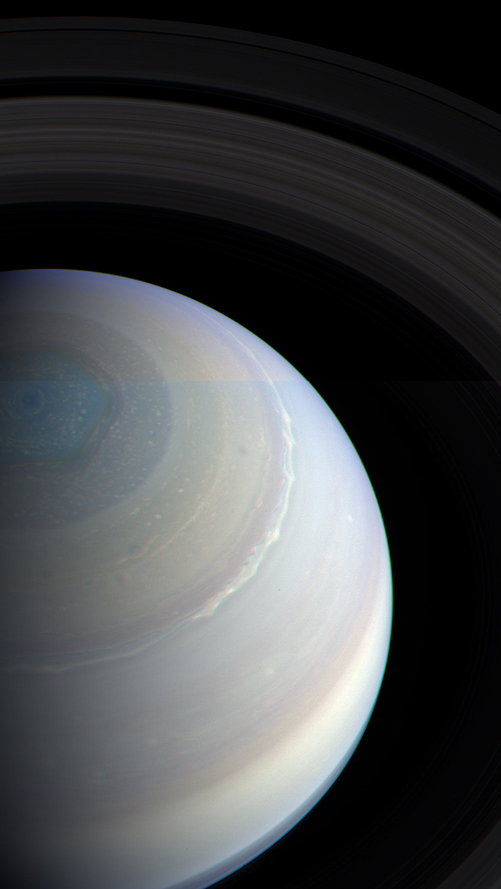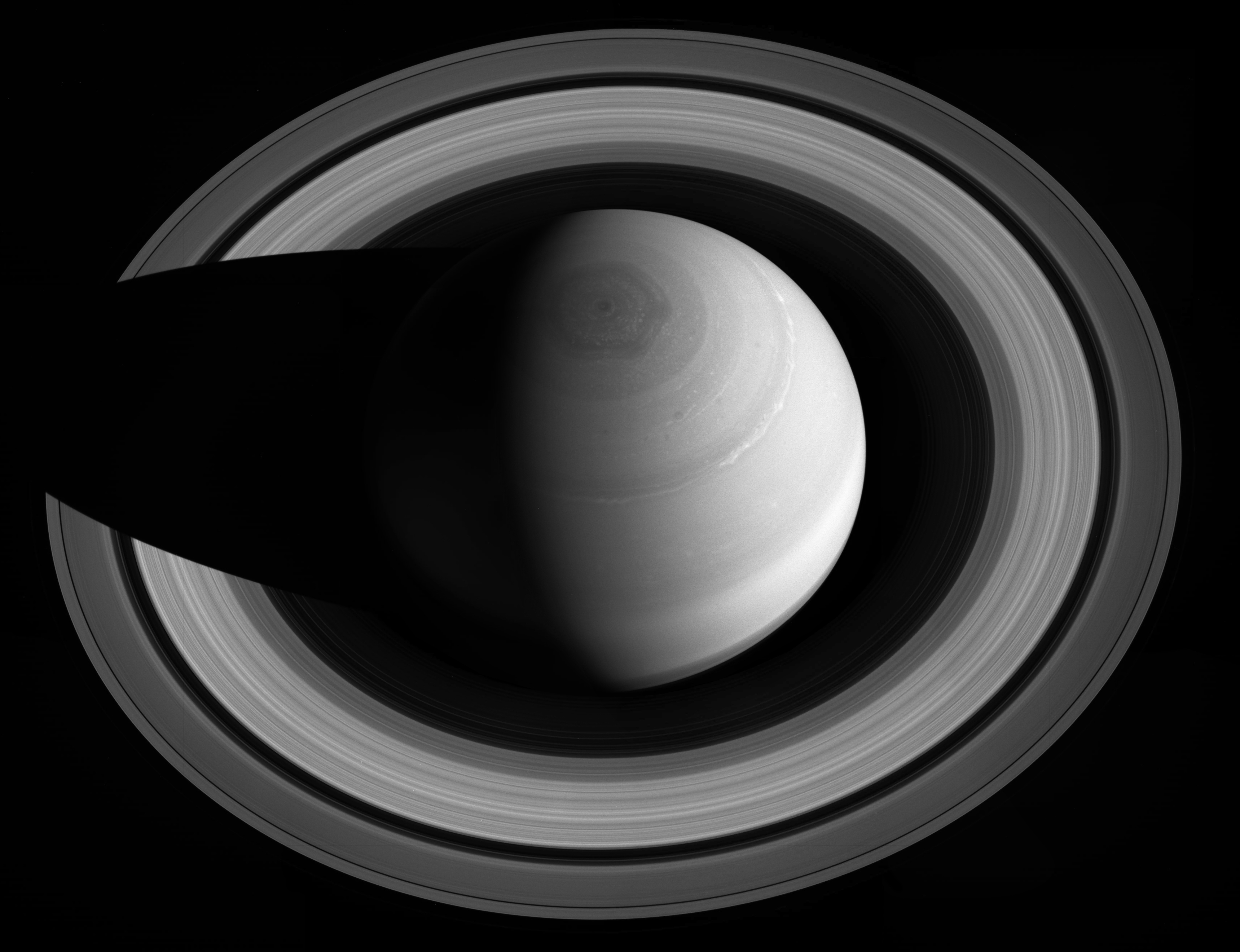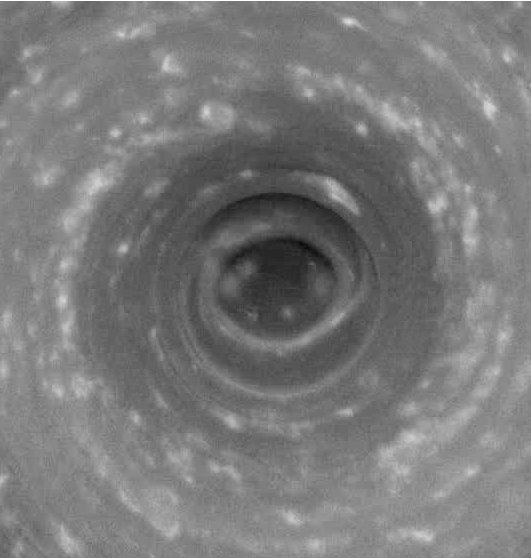It looks like you're using an Ad Blocker.
Please white-list or disable AboveTopSecret.com in your ad-blocking tool.
Thank you.
Some features of ATS will be disabled while you continue to use an ad-blocker.
16
share:
The Cassini spacecraft captured images of Saturn on Oct. 10, 2013 which were combined to create this image of Saturn and its rings:

Eye candy for sure.
In the full resolution image, you can even see some of the shepherd moons at the outer edges.
Full Resolution
Source

Eye candy for sure.
Here, we can see the whole thing, a gas giant like Jupiter, separated at last from the rings that encircle it.
In the full resolution image, you can even see some of the shepherd moons at the outer edges.
Full Resolution
Source
Stunning image! Even Phil Plait is impressed:
www.slate.com...
It's now my desktop wallpaper. The image is not from NASA, by the way, but was made by a member of the public using raw Cassini images at saturn.jpl.nasa.gov... (you can find them if you click "Browse Latest 500 Raw Images" and go back about 10 or 11 pages). I find this quite incredible that people can create great images like this out of those B&W jpegs with varying exposure, camera noise, and other artifacts, as well as calibrating the colours. Here are other images created by the same guy: www.flickr.com...
Here is my attempt at stitching 2 of the mosaic frames, which themselves are uncalibrated RGB composites of the B&W frames:

Here's another person's version, and just as stunning: s12.postimg.org...

It's now my desktop wallpaper. The image is not from NASA, by the way, but was made by a member of the public using raw Cassini images at saturn.jpl.nasa.gov... (you can find them if you click "Browse Latest 500 Raw Images" and go back about 10 or 11 pages). I find this quite incredible that people can create great images like this out of those B&W jpegs with varying exposure, camera noise, and other artifacts, as well as calibrating the colours. Here are other images created by the same guy: www.flickr.com...
Here is my attempt at stitching 2 of the mosaic frames, which themselves are uncalibrated RGB composites of the B&W frames:

Here's another person's version, and just as stunning: s12.postimg.org...

wildespace
Here is my attempt at stitching 2 of the mosaic frames, which themselves are uncalibrated RGB composites of the B&W frames:
That's pretty good!
That weird hexagonal cloud pattern at the north pole shows up nicely.
ionwind
Beautiful! Looks like it was was fashioned on a potter's wheel! The Universe is one big work of art, for sure.
Thanks for sharing!
reply to post by ionwind
Just awesome...
I'm blown away by the sharpness and detail of the shadow on the planet & rings.
And I love how the hexagon is still so clearly visible at the pole after 30+ years...
I still haven't heard a satisfying explanation for the sharpness and clarity of that when I asked about it a while ago:
Hexagon on Saturn...
Thanks for posting! (and btw I gave an S&F earlier)
Just awesome...
I'm blown away by the sharpness and detail of the shadow on the planet & rings.
And I love how the hexagon is still so clearly visible at the pole after 30+ years...
I still haven't heard a satisfying explanation for the sharpness and clarity of that when I asked about it a while ago:
Hexagon on Saturn...
Thanks for posting! (and btw I gave an S&F earlier)
edit on 10/17/2013 by Riffrafter because: brevity
Riffrafter
reply to post by ionwind
I still haven't heard a satisfying explanation for the sharpness and clarity of that when I asked about it a while ago:
Hexagon on Saturn...
edit on 10/17/2013 by Riffrafter because: brevity
Me either. And why does the south pole not have a hexagon?

www.jpl.nasa.gov...
That hexagon gets me every time. Such a beautiful and strange place!
reply to post by Riffrafter
A hexagon is produced when you squeeze a circle on all sides; it's the shape with the largest area that you could squeeze into the smallest space. Haxagon is often found in nature:
"From bees' honeycombs to the Giant's Causeway, hexagonal patterns are prevalent in nature due to their efficiency. In a hexagonal grid each line is as short as it can possibly be if a large area is to be filled with the fewest number of hexagons. This means that honeycombs require less wax to construct and gain lots of strength under compression." en.wikipedia.org...
The ideal crystalline structure of graphene is a hexagonal grid. Snowflakes also use a hexagon as their base.
In case of Saturn, I think it's the extremely strong winds (the fastest in the Solar System!) that are responsible for this: they push on the polar atmospheric mass, squeezing it on all sides. I don't know why the south pole doesn't have this feature; perhaps the polar mass is not as prevalent, or the winds are weaker there. I'm also wondering about the bluish colour of the hexagon, clearly there are some gasses and chemical compounds responsible for this, that aren't visible throughout the rest of Saturn (unless there's a big storm kicking up those chemicals).
A hexagon is produced when you squeeze a circle on all sides; it's the shape with the largest area that you could squeeze into the smallest space. Haxagon is often found in nature:
"From bees' honeycombs to the Giant's Causeway, hexagonal patterns are prevalent in nature due to their efficiency. In a hexagonal grid each line is as short as it can possibly be if a large area is to be filled with the fewest number of hexagons. This means that honeycombs require less wax to construct and gain lots of strength under compression." en.wikipedia.org...
The ideal crystalline structure of graphene is a hexagonal grid. Snowflakes also use a hexagon as their base.
In case of Saturn, I think it's the extremely strong winds (the fastest in the Solar System!) that are responsible for this: they push on the polar atmospheric mass, squeezing it on all sides. I don't know why the south pole doesn't have this feature; perhaps the polar mass is not as prevalent, or the winds are weaker there. I'm also wondering about the bluish colour of the hexagon, clearly there are some gasses and chemical compounds responsible for this, that aren't visible throughout the rest of Saturn (unless there's a big storm kicking up those chemicals).
edit on
17-10-2013 by wildespace because: (no reason given)
reply to post by wildespace
I think you may be on to something with regards to the wind speeds. They recreated the hexagon in the lab using liquids moving at different speeds:
I think you may be on to something with regards to the wind speeds. They recreated the hexagon in the lab using liquids moving at different speeds:
I wonder if this was the inspiration for the fried egg in a McDonald's breakfast.
Looks the same as a fried egg - same colour too.
Looks the same as a fried egg - same colour too.
new topics
-
Maestro Benedetto
Literature: 1 hours ago -
Is AI Better Than the Hollywood Elite?
Movies: 1 hours ago -
Las Vegas UFO Spotting Teen Traumatized by Demon Creature in Backyard
Aliens and UFOs: 5 hours ago -
2024 Pigeon Forge Rod Run - On the Strip (Video made for you)
Automotive Discussion: 5 hours ago -
Gaza Terrorists Attack US Humanitarian Pier During Construction
Middle East Issues: 6 hours ago -
The functionality of boldening and italics is clunky and no post char limit warning?
ATS Freshman's Forum: 7 hours ago -
Meadows, Giuliani Among 11 Indicted in Arizona in Latest 2020 Election Subversion Case
Mainstream News: 8 hours ago -
Massachusetts Drag Queen Leads Young Kids in Free Palestine Chant
Social Issues and Civil Unrest: 8 hours ago -
Weinstein's conviction overturned
Mainstream News: 9 hours ago -
Supreme Court Oral Arguments 4.25.2024 - Are PRESIDENTS IMMUNE From Later Being Prosecuted.
Above Politics: 11 hours ago
top topics
-
Krystalnacht on today's most elite Universities?
Social Issues and Civil Unrest: 11 hours ago, 9 flags -
Supreme Court Oral Arguments 4.25.2024 - Are PRESIDENTS IMMUNE From Later Being Prosecuted.
Above Politics: 11 hours ago, 8 flags -
University of Texas Instantly Shuts Down Anti Israel Protests
Education and Media: 13 hours ago, 7 flags -
Weinstein's conviction overturned
Mainstream News: 9 hours ago, 7 flags -
Gaza Terrorists Attack US Humanitarian Pier During Construction
Middle East Issues: 6 hours ago, 7 flags -
Massachusetts Drag Queen Leads Young Kids in Free Palestine Chant
Social Issues and Civil Unrest: 8 hours ago, 6 flags -
Meadows, Giuliani Among 11 Indicted in Arizona in Latest 2020 Election Subversion Case
Mainstream News: 8 hours ago, 5 flags -
Las Vegas UFO Spotting Teen Traumatized by Demon Creature in Backyard
Aliens and UFOs: 5 hours ago, 4 flags -
2024 Pigeon Forge Rod Run - On the Strip (Video made for you)
Automotive Discussion: 5 hours ago, 2 flags -
Any one suspicious of fever promotions events, major investor Goldman Sachs card only.
The Gray Area: 15 hours ago, 2 flags
active topics
-
University of Texas Instantly Shuts Down Anti Israel Protests
Education and Media • 232 • : marg6043 -
Post A Funny (T&C Friendly) Pic Part IV: The LOL awakens!
General Chit Chat • 7135 • : underpass61 -
Nearly 70% Of Americans Want Talks To End War In Ukraine
Political Issues • 94 • : Scratchpost -
VP's Secret Service agent brawls with other agents at Andrews
Mainstream News • 62 • : ByeByeAmericanPie -
SETI chief says US has no evidence for alien technology. 'And we never have'
Aliens and UFOs • 72 • : yuppa -
My Poor Avocado Plant.
General Chit Chat • 77 • : JonnyC555 -
New whistleblower Jason Sands speaks on Twitter Spaces last night.
Aliens and UFOs • 61 • : Ophiuchus1 -
Is AI Better Than the Hollywood Elite?
Movies • 2 • : 5thHead -
Gaza Terrorists Attack US Humanitarian Pier During Construction
Middle East Issues • 25 • : CarlLaFong -
Mood Music Part VI
Music • 3102 • : Hellmutt
16
